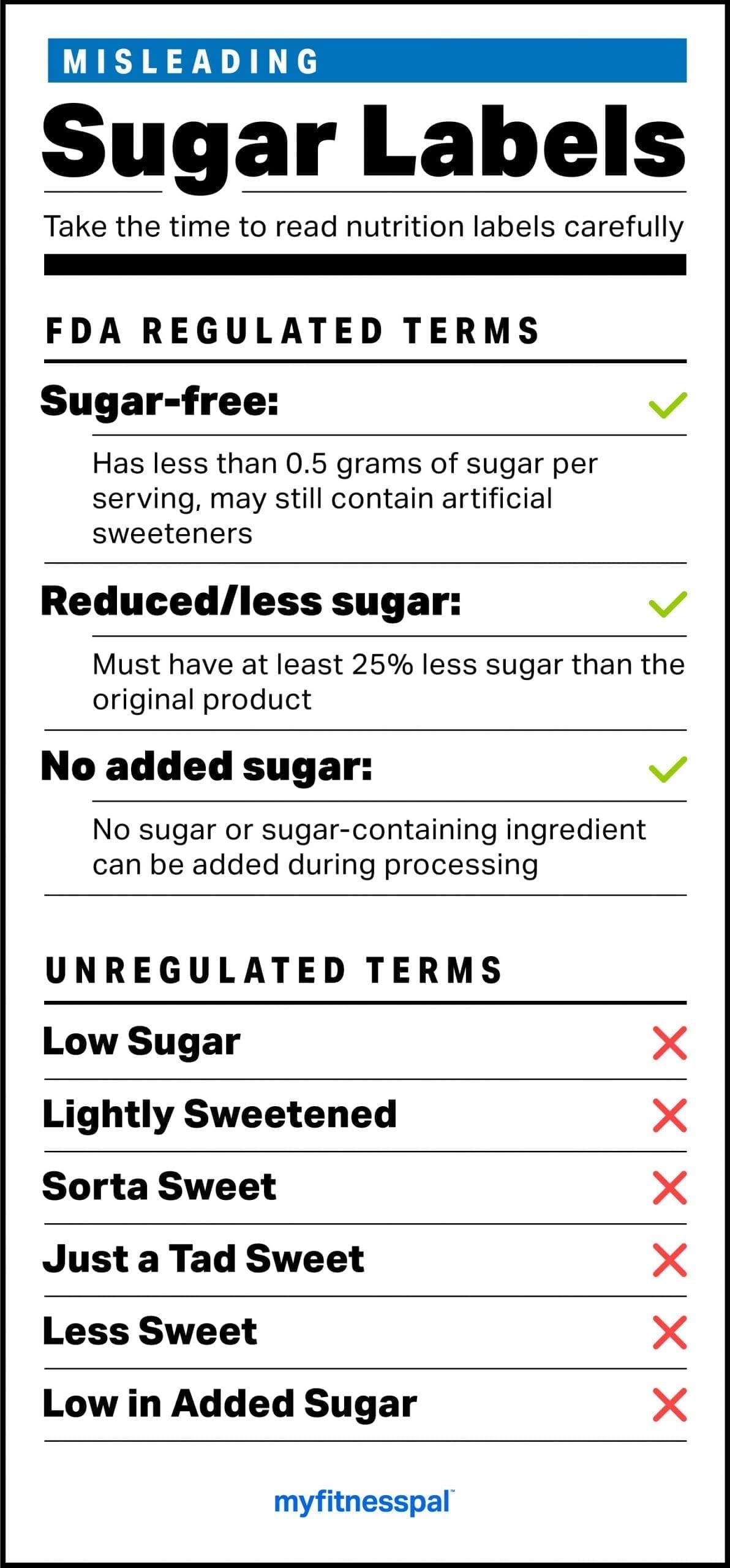It’s no surprise nutrition pros agree that sugary drinks and foods should be enjoyed in moderation. But when it comes to added sugar, it can be tough to know how much is too much. That’s why food labels that say things like ‘low sugar,’ ‘lightly sweetened,’ or ‘just a tad sweet’ seem helpful — at first.
However, these labels can be misleading. In fact, some products with these labels contain more added sugar than the recommended daily limit in just one serving. Registered dietitians explain why limiting added sugar intake is important and how to read labels carefully.
THE CASE FOR CUTTING BACK ON ADDED SUGAR
Unlike natural sugars found in fruit and dairy (which are loaded with nutritious vitamins and nutrients), added sugar is added during food processing and is devoid of nutrients. “Added sugars are typically the culprit behind health issues like weight gain, high triglycerides, low HDL cholesterol, high blood pressure and high blood sugar,” explains Grace Goodwin Dwyer, RD. “Too much added sugar can also put you at greater risk for developing heart disease and Type 2 diabetes.”
To minimize health risks, “the U.S. Dietary Guidelines recommend less than 10% of your daily calories come from added sugar,” says Goodwin Dwyer. “For a 2,000 calorie diet, that’s a maximum of 50 grams of added sugar per day.”
The American Heart Association sets an even lower bar: It recommends women limit added sugar to 25 grams per day and men limit it to 36 grams per day.
“If you’re trying to lose weight or become healthier, I’d stick to the AHA’s guideline and focus on adding nutrients like fiber and protein to your diet,” says Goodwin Dwyer. “These will help you feel fuller for longer, promote good gut health and maintain your body’s lean muscle mass.”
WHY “LOW SUGAR” LABELS CAN BE MISLEADING
Many food and drink labels use marketing terms to boast a product’s benefits. But many of the marketing terms you see on food and drink packages that mention sugar are not regulated by the FDA, explains Jackie Elnahar, a registered dietitian. Because of this, food and drink companies have a great deal of leeway to put nearly whatever words they want on the label, no matter what’s actually in the product.
“The lack of clarity in the terms has led to potentially misleading food marketing,” Elnahar adds. In fact, Honest Tea (which is owned by Coca-Cola) was recently sued for marketing a tea with 25 grams of sugar as “just a tad sweet.”
“Long story short, you shouldn’t blindly trust the claims [on food and drink labels],” says Emily Wunder, RD.
Some terms have set criteria from the FDA such as:

THE BOTTOM LINE
Take the time to read nutrition labels carefully. “Since the U.S. government recently changed the label, it’s easier to identify and determine how much added sugar is in a product,” says Kristin Kirkpatrick, RD.
“The new label sections off added sugar (as opposed to naturally-occurring sugar), and this is what you want to look for,” explains Kirkpatrick.
“Look for products that contain 10 grams or less of added sugar per serving,” recommends Goodwin Dwyer. You can also track your sugar intake with an app like MyFitnessPal to help you be more mindful of your overall consumption.




